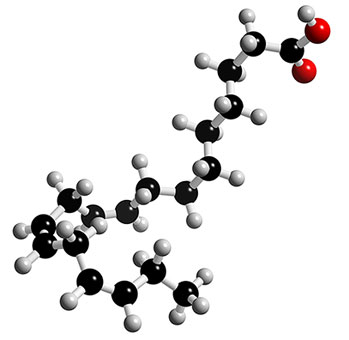Catenation is the property of binding an element to itself through the covalent bonds to form the ring or chain molecules. Carbon is the most common element that exhibits the phenomenon of catenation. It can form the long hydrocarbon rings and chains like the benzene.
Catenation is the chemical linkage to the chains of the atoms of the same element. Catenation only occurs among the atoms of an element that is having valance of at least two and forms the relatively stronger bonds with itself. Carbon has tetravalent nature and it has the unique property to form the bonds with the other atoms of carbon and forms a long chain. In biochemistry, carbon chains combine with various other elements like oxygen, hydrogen, bio-metals, on the backbone of the carbon. This process can combine the multiple chains which are encoded by multiple genes such as heavy chains and light chains making up the antibodies.

Due to this property of catenation, carbon can be straight chain, branched chain or cyclic ring. This outstanding ability to form the compounds comes from the capacity of its atoms to bind to each other not only in the straight chains but in the complex branches like the branches of the tree. They can join each other in the head to tail structure and make the rings of carbon atoms. Particularly, this element has no limit to the complexity or the number of branches or to the number of rings that could be attached to them. So, it gives a unique feature that there is no limit to the formation of different molecules.
The carbon atom is capable to share not only one electron with another atom by forming the single bond but two or three electrons can also be shared by the carbon to make double or triple bond. Due to this characteristic, it can form a varying number of the possible bond combinations and at different places and produce a great number of different molecules. But here is an important thing to remember that a molecule differing from a single bond position or atom becomes a different molecule and have different chemical and physical conditions.
For example, methyl iodide and methylene iodide differ from each other in only single and double bond aspect but they have different uses and their properties vary distinctly. Methyl iodide is being used as a pre-planting biocide for controlling the insects and its use is just like a pesticide. While the methylene iodide is used as an optical contact liquid for the determination of the refractive index of various gemstones.
The ability of any element to catenate is strongly dependent on the bond energy of an element for itself that decreases with more diffusing orbitals which are overlapping to form the bonds. Carbon has the least diffusing valance shell consisting of p orbital and it is capable to make loner p-p sigma bonds with the chains of atoms rather than with the heavier elements which bond with the higher valence shell orbitals.